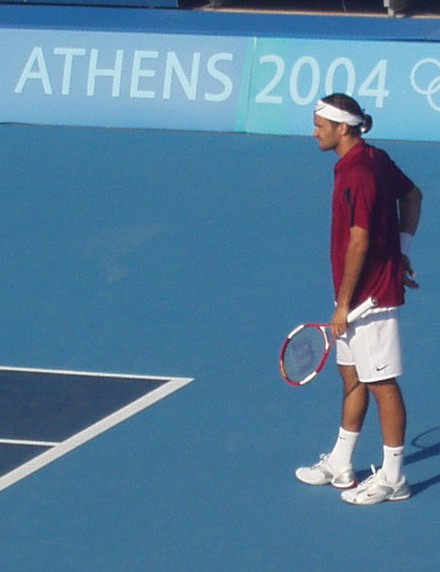
Tennis Serve - Tips And History Of This Tennis Shot
By Jimbo Morris
The tennis serve is an important part of any tennis match. It is the first action taken at the start of a game and the start of each point. It can be used to intimidate the competition and show off your power which makes it an important part of the sport to master. As it is so important it is not easy and it can take some time to become a great server, in fact some people never manage to learn how to make an impressive serve.
What Serve Do You Prefer?
There are four main types of serve that are most commonly used. The four serves are: the slice serve, kick serve, underhand serve and the flat serve. The differences between these serves relate to the spin of the ball, the direction the spin takes, the twist and if there is a kick (using a heavy top spin) or not. It is a good idea to practice and master all types of serves as they can all be used tactically in any game.
Breaking a Serve
One of the main challenges in tennis is breaking the serve of your opponent. The player that is serving is expected to win the point as the serve can be used offensively and it is possible to make an ace and win the point immediately with a well-played first serve. Therefore the battle for the opposing player is to break the serve and take away the point. This is a vital element in any match and if you are working on improving your game it is a good area to concentrate on.
For all types of serve, it's important to have a great racquet, and I personally like rel=nofollow [http://www.stevegtennis.com/shop/best-head-tennis-racquets.php]head tennis racquets as they have been used my some of the worlds best servers over decent decades.
Legalities in the Game
Practising landing serve balls within the lines is a must for any player. When make a serve the player has two chances to get it right. A serve is legal if it is able to land in the court and doesn't touch anything else. When the ball lands outside of the court it is called as a fault. If the server takes two serves that both land outside of the court lines it is called a double fault and this will result in the point being given over to the other player.
You also have to watch your footing with taking the serve. Your feet cannot touch the baseline until after you have hit the ball and you aren't allowed to run when serving or to walk around. Practice staying put on the court and mastering your serves to make sure you get it right.
If you want to improve your server then you can pay a pro to give you a lesson, but you can also just watch some videos of the best players and get some tips. For example if you look at the Sampras serve, he makes it look so easy and it flow in every movement. Of course, Sampras has retired now but out of current player Roger Federer has an awesome server. It may not be the most powerful but the accuracy is superb and he often gets an ace even when not serving that hard.
It also helps to have a tennis racquet that fits your game, and I would recommend you look at some of the latest head racquets, as they are used by many top players like Novak Djokovic and Andy Murray. Of course, maybe the best server of all time was Goran and he also had a classic head racquet frame. Overall, while improving your tennis game is important, you should always remember to have fun on the court, and smile even if you are not playing your best. If you are just starting and want to master all shots, just book a few lessons down your local club and you will be off on a great journey of mastering the forehand, backhand, and serving motions.
I've been playing tennis for over 30 years and the hardest shot I found to master was the tennis serve. You really have to be so confident to have a great serve in tennis, so watch the pro players on TV serve and copy their motion and you will be serving better in no time. Enjoy improving your tennis game.
Article Source: Tennis Serve - Tips And History Of This Tennis Shot




















